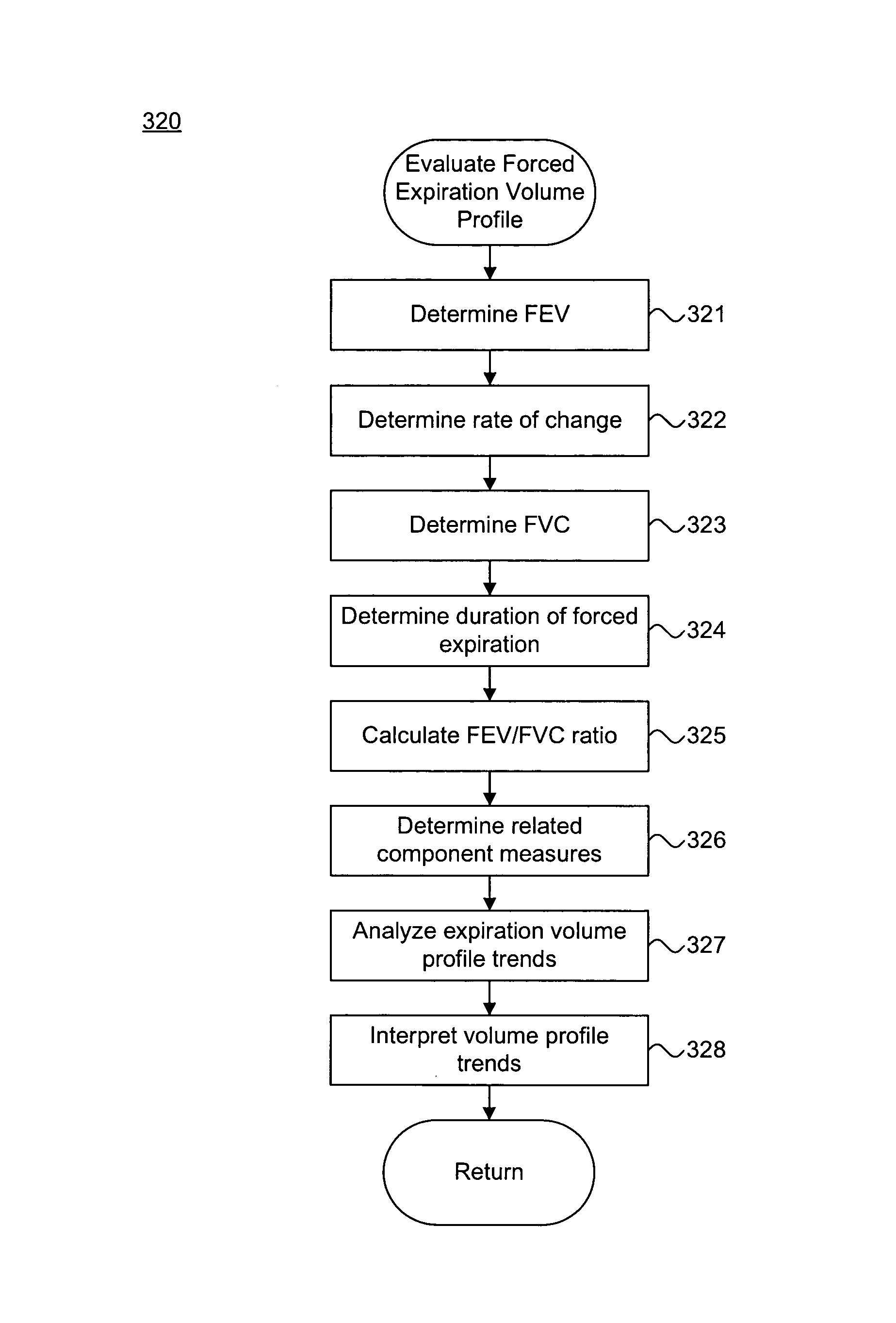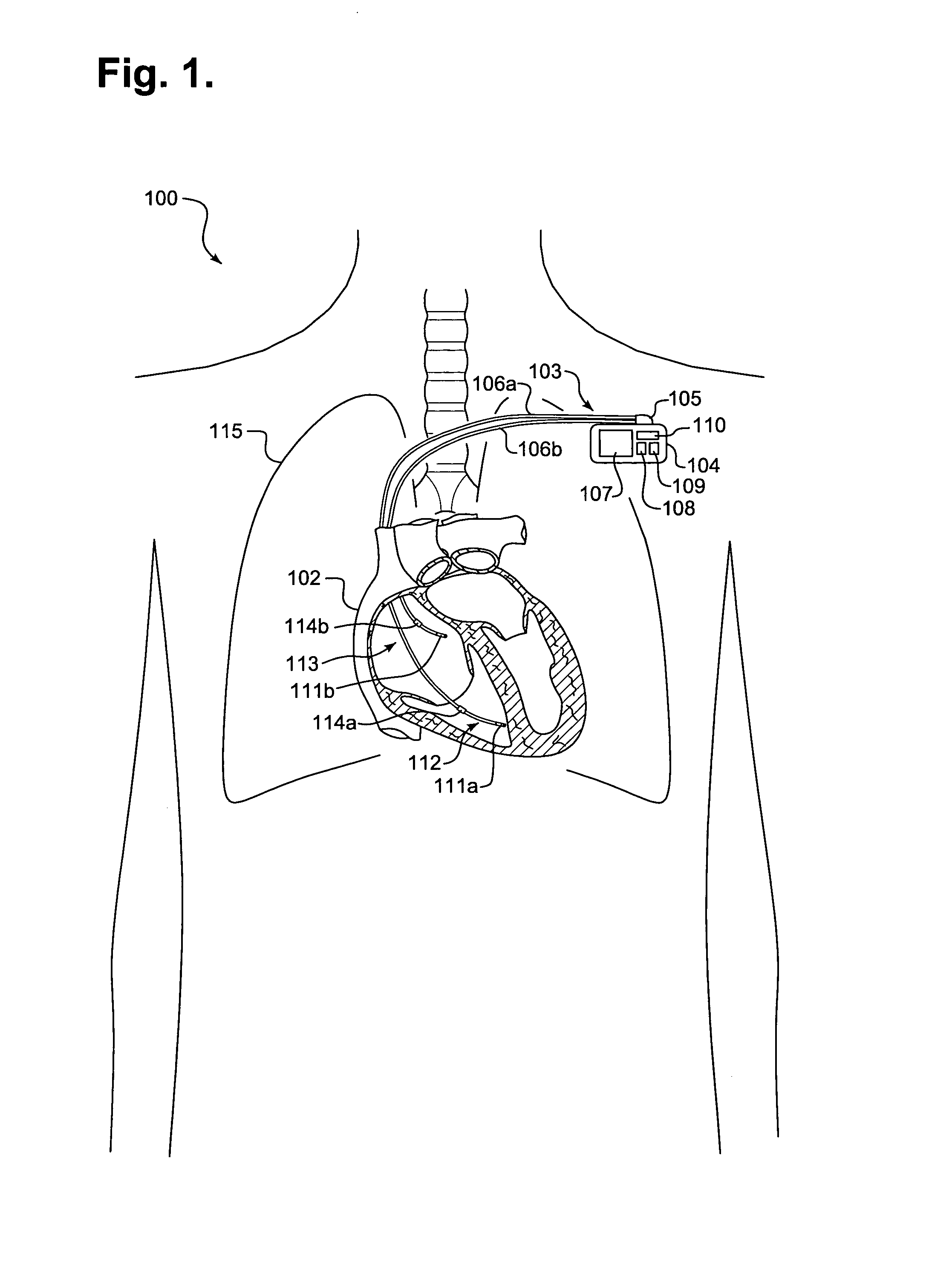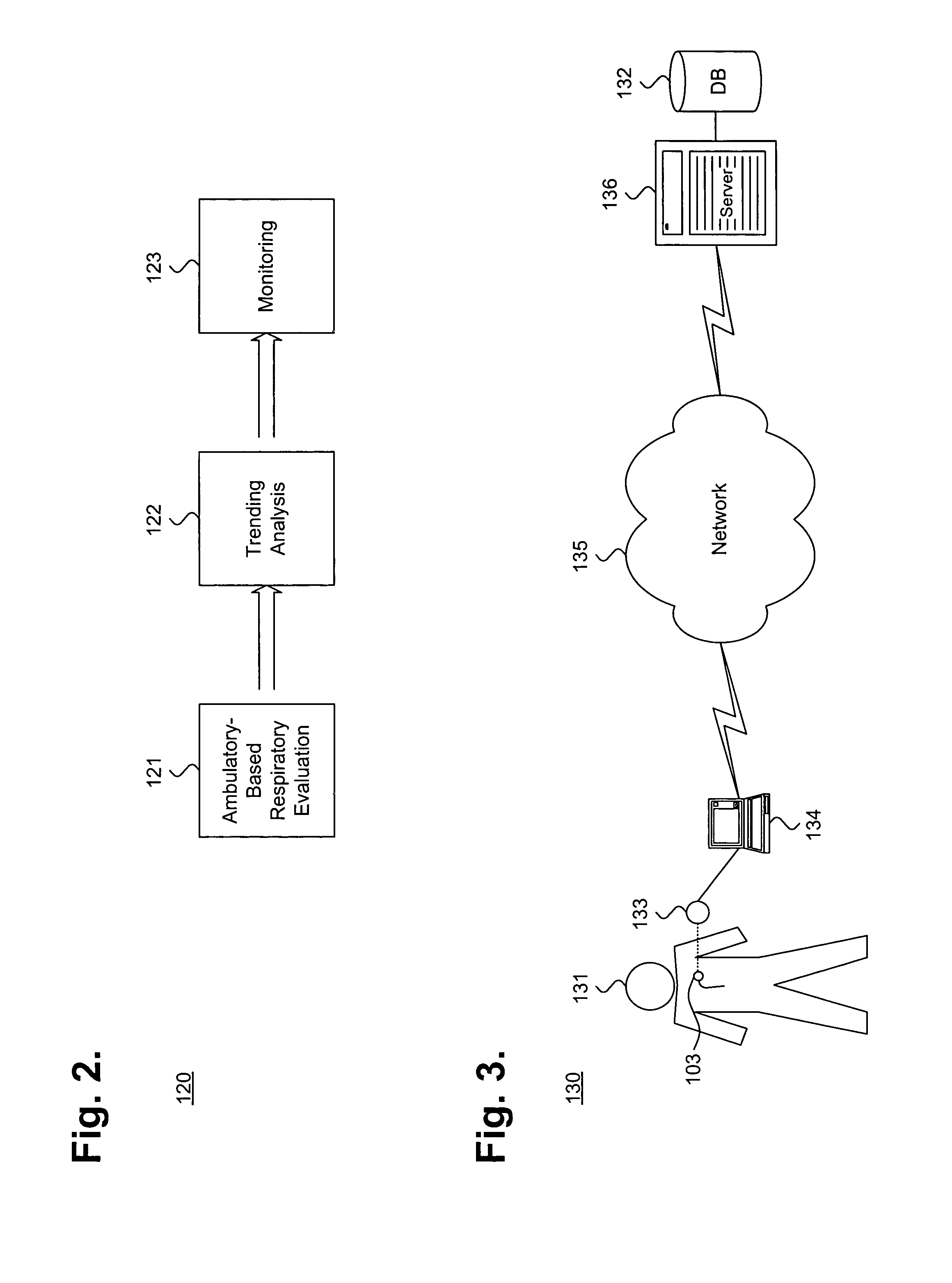System and method for assessing pulmonary performance through transthoracic impedance monitoring
a technology of pulmonary performance and transthoracic impedance monitoring, which is applied in the field of pulmonary performance assessment, can solve the problems of difficult pulmonary performance testing in a non-clinical setting, difficulty in ensuring that the battery of pulmonary performance tests, in particular, forced expiration, is accurately and consistently administered,
- Summary
- Abstract
- Description
- Claims
- Application Information
AI Technical Summary
Benefits of technology
Problems solved by technology
Method used
Image
Examples
Embodiment Construction
Transthoracic Impedance Monitoring Using Implantable Medical Device
[0026]FIG. 1 is a schematic diagram 100 showing an implantable medical device (IMD) 103 monitoring transthoracic impedance, in accordance with a further embodiment of the present invention. The IMD 103 is surgically implanted in the chest or abdomen of a patient and consists generally of a housing 104 and terminal block 105. The IMD 103 is coupled to a set of leads 106a-b at the terminal block 105. During surgery, the leads 106a-b are threaded through a vein and placed into the heart 102 with the distal tips of each lead 106a-b positioned in direct contact with tissue inside the heart 102.
[0027]The housing 104 contains a battery 107, control circuitry 108, memory 109, and telemetry circuitry 110. The battery 107 provides a finite power source for the IMD components. The control circuitry 108 samples and processes raw data signals and includes signal filters and amplifiers, memory and a microprocessor-based controller...
PUM
 Login to View More
Login to View More Abstract
Description
Claims
Application Information
 Login to View More
Login to View More - R&D
- Intellectual Property
- Life Sciences
- Materials
- Tech Scout
- Unparalleled Data Quality
- Higher Quality Content
- 60% Fewer Hallucinations
Browse by: Latest US Patents, China's latest patents, Technical Efficacy Thesaurus, Application Domain, Technology Topic, Popular Technical Reports.
© 2025 PatSnap. All rights reserved.Legal|Privacy policy|Modern Slavery Act Transparency Statement|Sitemap|About US| Contact US: help@patsnap.com



